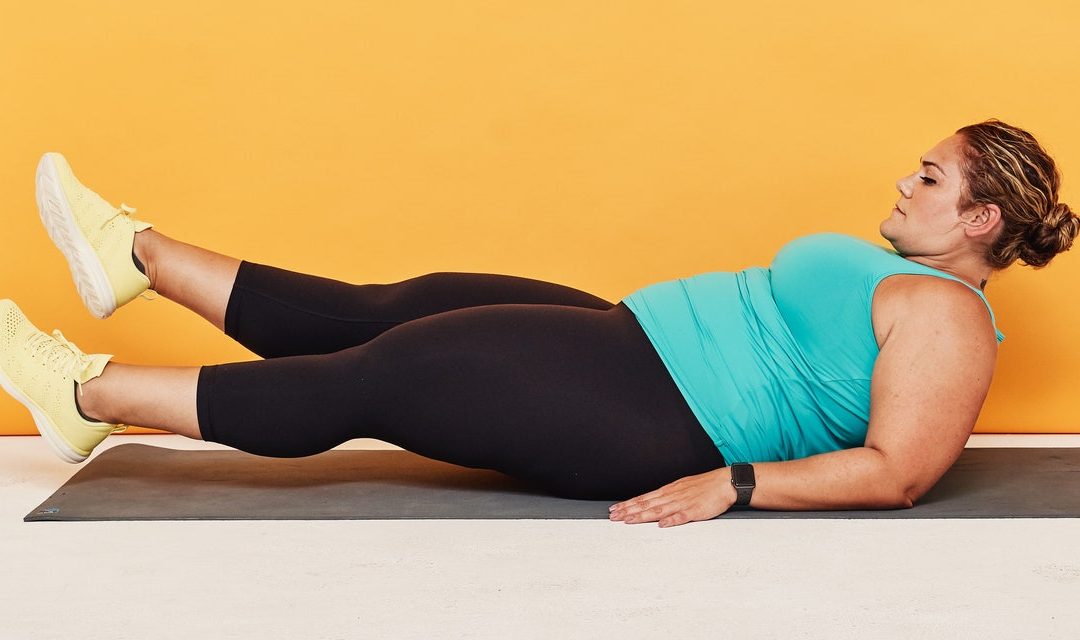Training your core is important, and having a list of go-to abs moves—like the scissors exercise—can help you effectively target this important muscle group without spending tons of time searching for the perfect way to do so.
The scissors exercise, also sometimes called the flutter kick, is an advanced core move because it involves keeping both legs extended and elevated as you perform reps, which places constant tension on your core. “It’s definitely a good movement to challenge yourself,” personal trainer Evan Williams, CSCS, founder of E2G Performance in Chicago, tells SELF. In fact, he recently programmed the scissors exercise for his pro basketball players as part of a 5-minute abs finisher to end their workouts.
Executing the scissors exercise is surprisingly straightforward: You lie on your back on a mat, lift both legs about six inches off the ground, and then kick them up and down like you’re swimming freestyle. You can also cross one leg over the other and switch which leg is on top with each rep. Whichever way you perform it, this move gets your core muscles firing.
So if you’re looking for a new abs exercise to add to your workout routine, don’t sleep on the scissors. Here, everything you need to know about the scissors exercise, including its benefits, which muscles it works, whether it’s a safe movement, and more. Ready to work your core? Right this way!
What kind of exercise is the scissors?
The scissors is a core move—and an advanced one at that, says Williams. More specifically, it’s an “anti-extension” core exercise, since the goal of the exercise is to prevent your lower back from going into extension, or arching and coming off the floor. Your back naturally wants to go into extension when your feet are hovering above the ground and performing the kicking motion, so you have to really engage your core muscles to stop that from happening.
You can think of the scissors exercise as a more challenging version of the dead bug, says Williams. That’s because both moves are anti-extension core exercises that involve lying on your back and bracing your core to prevent your back from arching and lifting off the floor.
The difference? With the scissors exercise, you keep both legs extended and elevated the entire time, which places constant tension on your core and back. On the other hand, with the dead bug exercise, you’re extending just one leg at a time, so there’s less demand placed on your core and back muscles. This makes the dead bug more of a beginner-friendly core exercise, while the scissors kick tends to be a more intense, advanced movement.
What muscles does the scissors exercise work?
The scissors exercise targets the lower part of your rectus abdominis (the muscles that run vertically along the front of your abdomen) as well as your transverse abdominis (the deepest core muscles that wrap around your spine and sides). It also engages your hip flexors as well as your erector spinae (a group of back muscles that help hold your body upright), says Williams.
What are the benefits of the scissors exercise?
Since the scissors exercise is an advanced core movement that requires serious core engagement, it can help boost core strength and stability. That’s important because your core provides a stable foundation for movement, helps protect your spine from injury, and transfers energy between your lower and upper halves. The stronger and more stable your core is, the better it will be at fulfilling all these roles.

